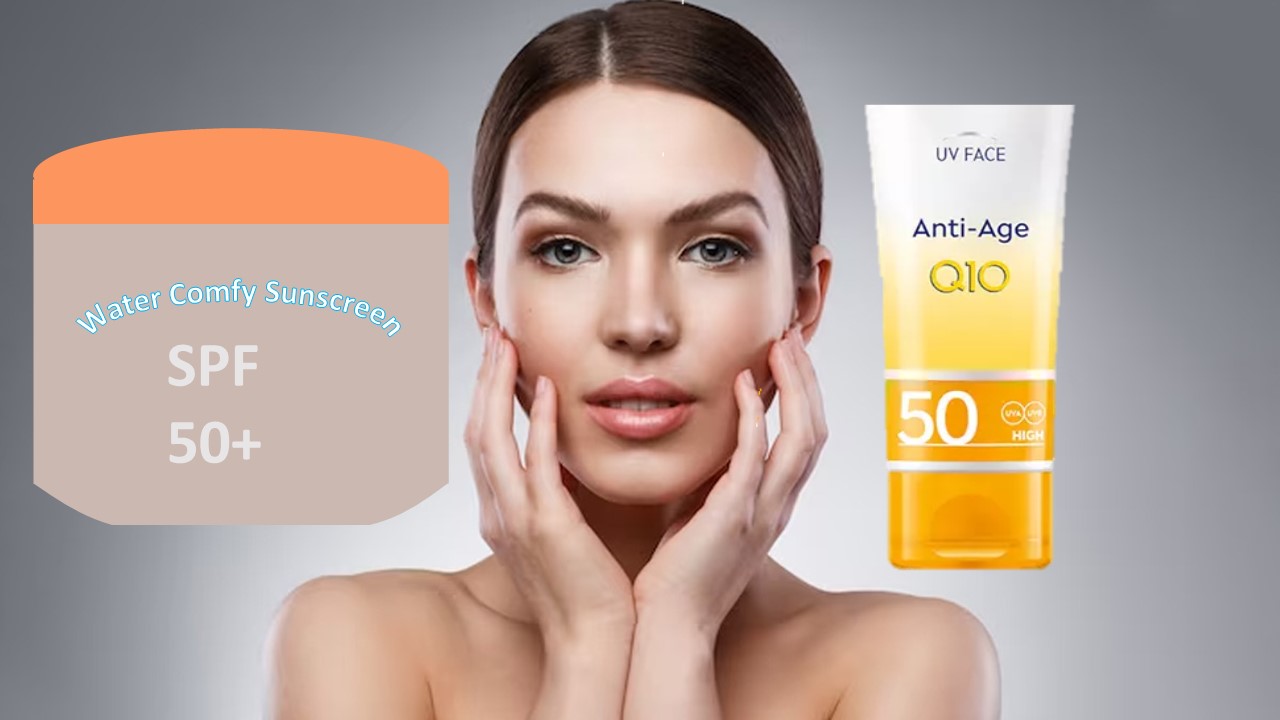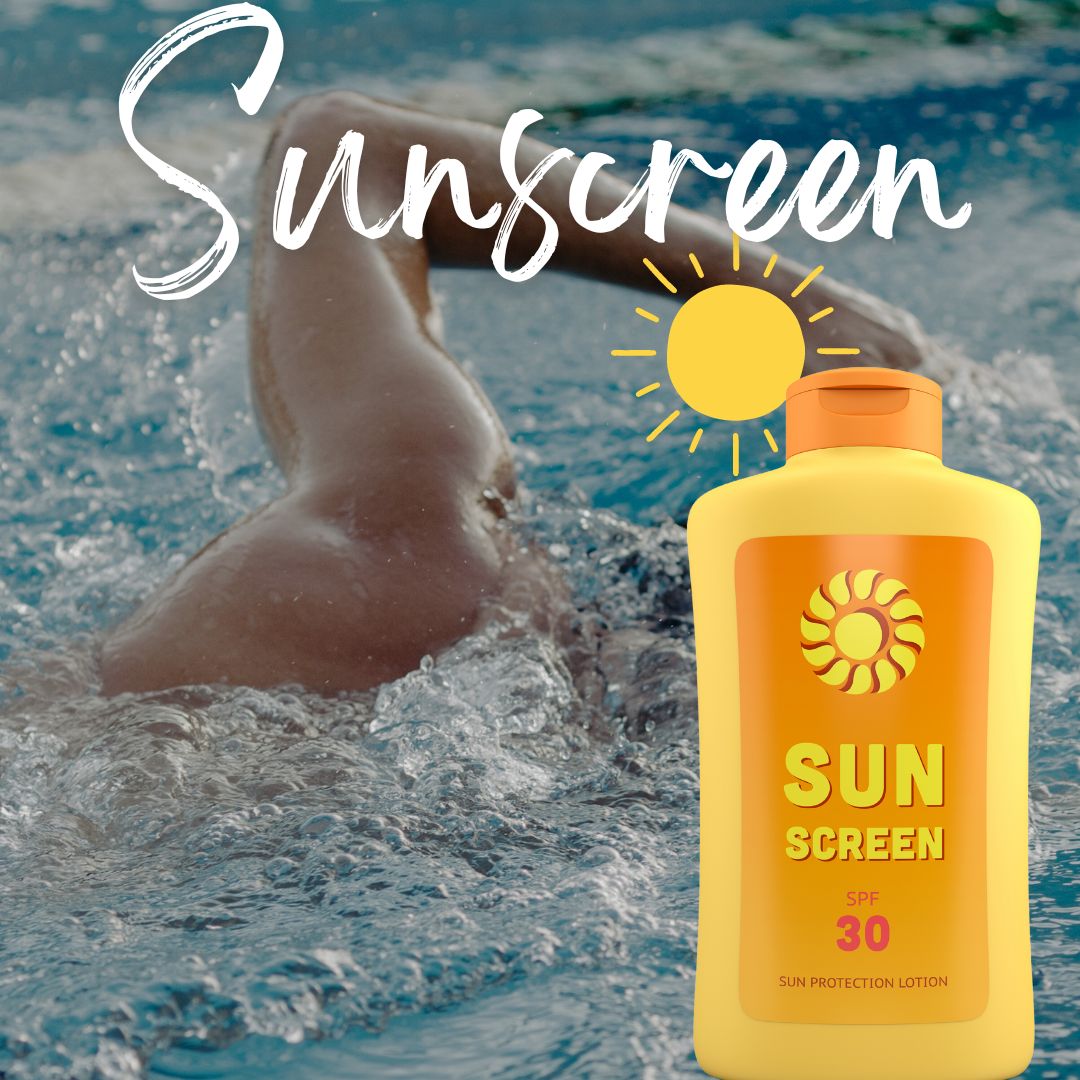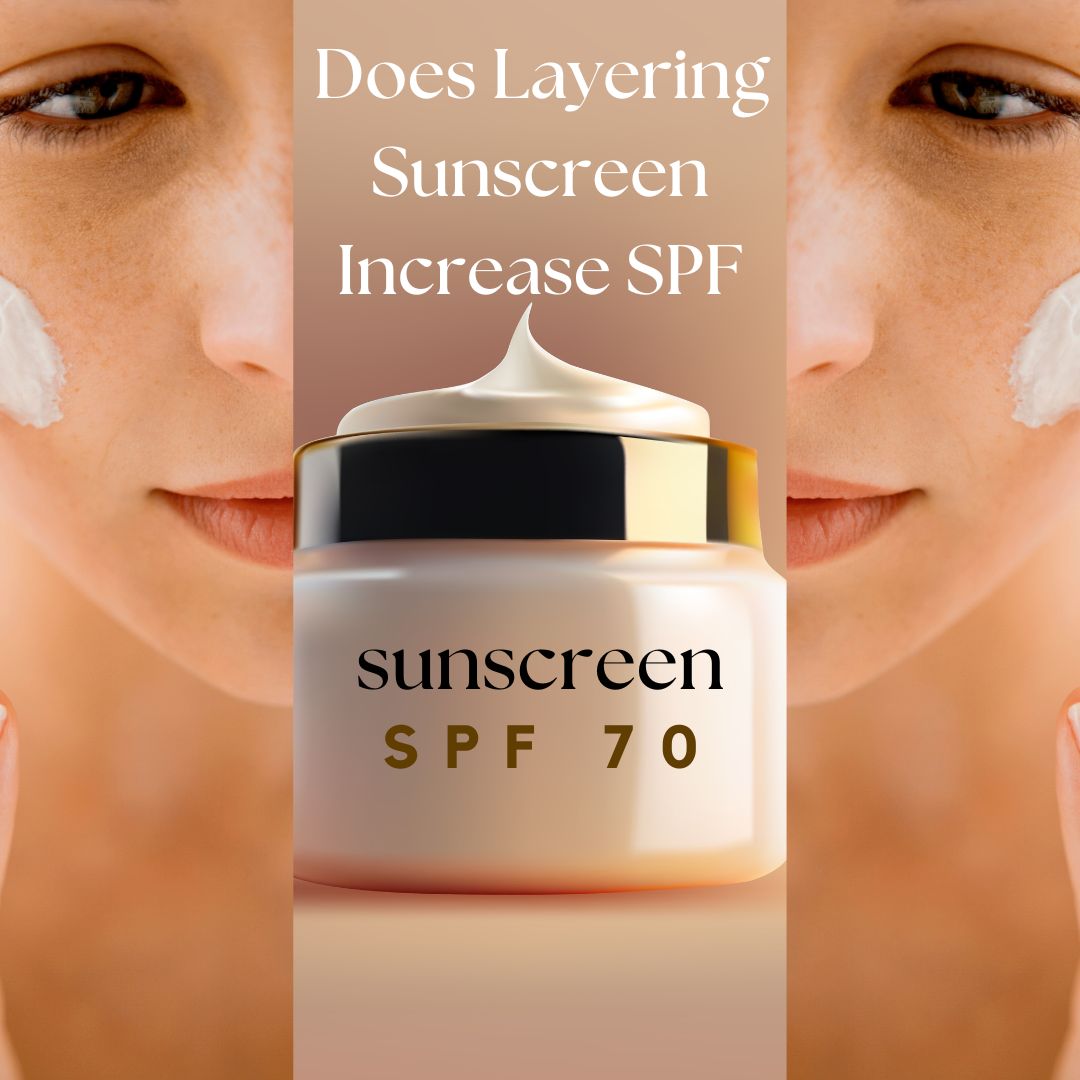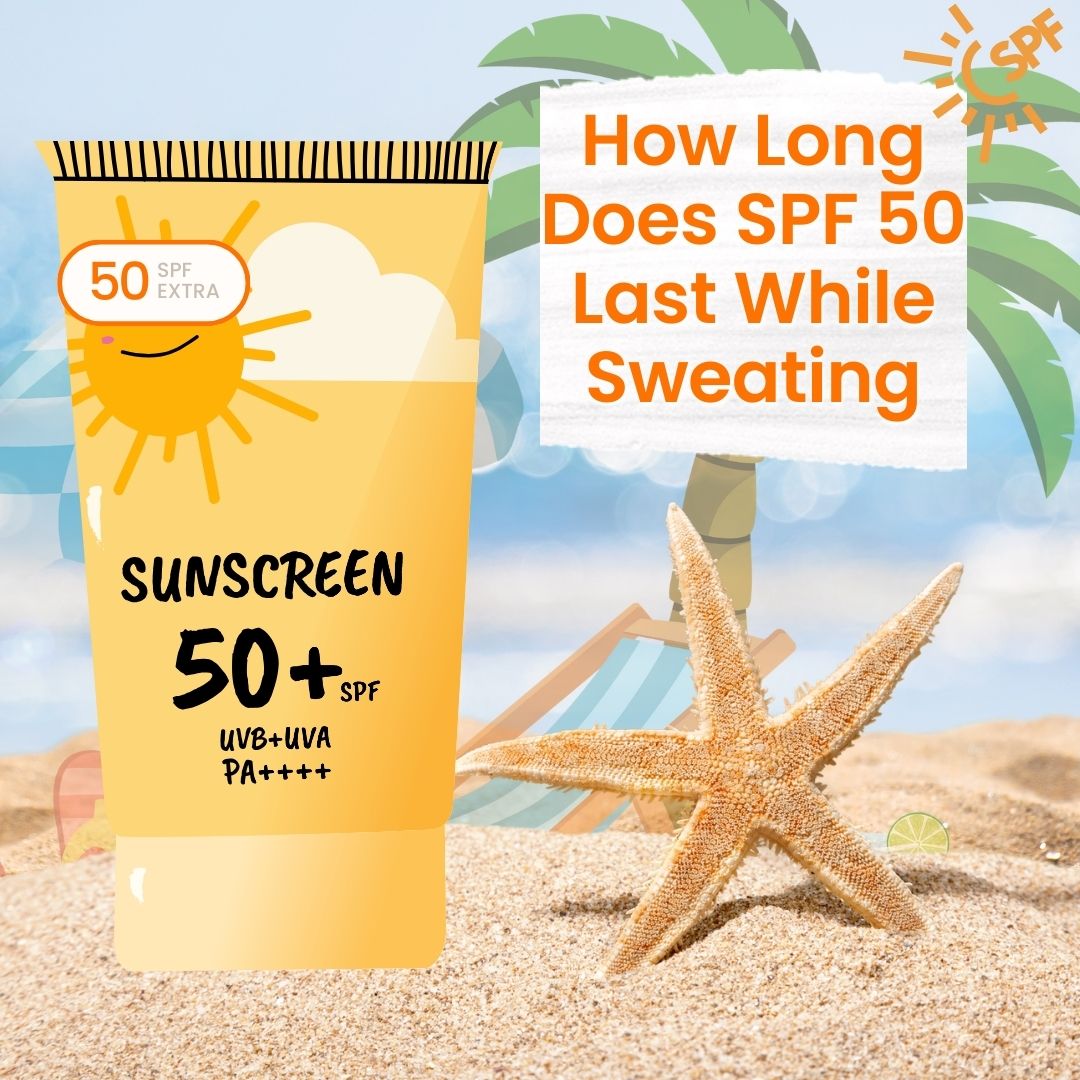Can Sunscreen Prevent Tanning – The Truth Now
Can sunscreen prevent tanning? This question has sparked curiosity in a lot of people who love the outdoors. Of course, everyone does. The short answer is, yes, to some degree.
Sunscreen can block most of the sun’s rays, but a small proportion of these rays will still reach your skin and may trigger the tanning mechanism. So, while you’re outdoors building sandcastles, remember that your knight (sunscreen) is fighting a tough battle.
In this article, we’ll explore sunscreen prowess and tanning. We’ll also explain how sunscreen works, the difference between UVA and UVB rays, and the long-term effects of sun exposure. We will discuss the importance of wearing sunscreen every day and the role it plays in preventing skin cancer. So, read on.
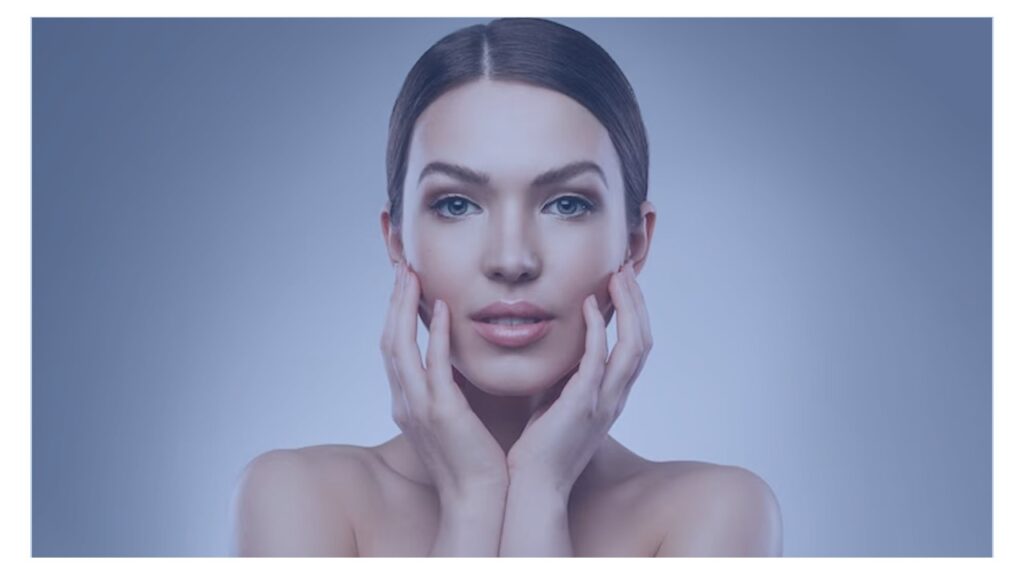
Can Sunscreen Prevent Tanning
Yes, sunscreen can prevent tanning to a certain degree, but it is still possible to get a slight tan.
Sunscreen works by absorbing or reflecting ultraviolet (UV) rays that can cause damage to the skin. There are two types of sunscreens which are; chemical-based and physical-based sunscreen.
Chemical-based sunscreens, such as oxybenzone and octisalate, work by absorbing UV rays and altering them before they can cause damage to the skin while physical-based sunscreens, like those made with zinc and titanium oxides, reflect and scatter UV rays away from your skin.
However, sunscreens act as a filter and cannot prevent 100% of your skin’s exposure to the sun. Therefore, some degree of tanning can still occur.
Usually, tanning is your skin’s response to sun exposure and is caused by the release of melanin in the affected area. Long-term effects of UV exposure include cancer and premature photoaging.
Dermatologists recommend the wearing of a broad-spectrum sunscreen, which protects against both UVA and UVB rays, every day.
For instance, wearing sun protection factor (SPF) 15 sunscreen may help reduce your risk of melanoma skin cancer by up to 50% and squamous cell carcinoma, a non-melanoma skin cancer, by 40%.
One thing is that there is no such thing as a “safe tan.” Even a slight tan indicates damage to your skin cells from UV rays. If your skin normal protection before it starts burning in the sun would be 5 minutes, then applying sunscreen of SPF 15 would multiply that by 15 making 75 minutes.
SPF And Tanning
Sun Protection Factor (SPF) plays an essential part when it comes to preventing tanning. It protects you against UVB rays, which are primarily responsible for sunburn and tanning.
SPF is a measure of how well a sunscreen can protect your skin against UVB rays. It can be thought of as a factor of how much longer it will take your skin to burn than without sunscreen.
For instance, applying SPF-15 sunscreen means that your skin will take 15 times longer to burn than if you were not wearing sunscreen.
Understanding SPF
SPF is not just a number; it’s a measure of how effectively a sunscreen shields your skin from UVB radiation—the chief architect of sunburns and tanning.
The SPF value represents the level to which the sunscreen extends the time it takes for your skin to start reddening compared to when it’s left unprotected.
Higher SPF, Stronger Defense
As the SPF value increases, so does your shield against UVB-induced tanning. It’s akin to upgrading your armor—the higher the SPF, the longer you can revel in the sun without succumbing to its tanning effects.
For instance, SPF 30 sunscreen provides protection against approximately 97% of UVB rays, while SPF 50 pushes the safeguard to around 98%.
Delaying the Tan
Think of SPF as a time-defying wizard that extends your skin’s resilience against UVB rays. If your skin typically reddens after 10 minutes of sun exposure, SPF 30 theoretically multiplies this time by 30, allowing you around 300 minutes of sun-soaking before the onset of tanning.
This extended shield buys you precious moments to enjoy the sun without sacrificing your glow.
Crucial Caveat
While higher SPF values offer enhanced protection, you should understand that no sunscreen can provide absolute immunity. Reapplication, especially after swimming or sweating, remains paramount for continuous protection against the damage the sun can cause to your skin.
Best Sunscreen To Prevent Tanning
While there is no sunscreen to provide you with 100% protection, there are sunscreens that can provide 98% protection and you can easily use additional protection like a wide hat and sunglasses to cover the remaining 2%. Here are the best sunscreens to prevent tanning:
Product Image | Product Name | Key Features | Rating | Price |
| ||||
| ||||
| ||||
| ||||
| ||||
|
UVA and UVB Protection
When it comes to protecting your skin from the sun’s rays, understanding the distinction between UVA and UVB is necessary. Opting for a broad-spectrum sunscreen becomes the cornerstone of a comprehensive defense strategy, protecting against the dual threats of tanning and premature aging.
UVB Rays: The Tanning Instigators
UVB rays are the provocateurs of tanning, orchestrating the sun-kissed glow that many seek. These rays predominantly affect the outer layers of your skin, triggering the production of melanin—the pigment responsible for the color of your skin.
While a tan might seem like a harmless souvenir from a sunny day, UVB rays can lead to sunburn and increase the risk of skin cancer.
UVA Rays: The Aging Culprits
In tandem with UVB, UVA rays play a subtle yet insidious role in the aging process. These rays penetrate deeper into your skin, causing damage to collagen and elastin fibers.
Over time, this contributes to wrinkles, fine lines, and a prematurely aged appearance. Unlike the immediate consequences of UVB exposure, the aging effects of UVA rays manifest gradually, making the impact all the more significant in the long run.
Broad-Spectrum Brilliance
Why settle for half the protection when you can have it all? Broad-spectrum sunscreens take center stage by offering a dual defense strategy against both UVA and UVB rays.
By incorporating a variety of filters that address the distinct wavelengths of these rays, these sunscreens ensure a comprehensive shield. Choosing broad-spectrum isn’t just about preventing today’s tan; it’s an investment in the enduring health and resilience of your skin against the aging forces of tomorrow.
As you make your sunscreen selection, envision it as a guardian standing resolute against the tandem threats of tanning and premature aging. By opting for the brilliance of broad-spectrum protection, you’re not just shielding your skin; you’re preserving its timeless glow and vitality.

How To Apply Sunscreen For A Perfect Coverage? – Sunscreen Application Tips
Understanding the art of sunscreen application is the gateway to sun-soaked adventures without compromising your skin’s well-being.
Here’s what you need know to ensure you’re wielding your sunscreen with maximum effectiveness, covering everything from quantity to those often-forgotten nooks.
1. Quantity Matters
Don’t be shy with your sunscreen—liberally apply a sufficient amount to cover all exposed skin. The general rule is about one ounce (or a shot glass full) for a full-body application. Applying too little reduces the effectiveness of the SPF, leaving your skin vulnerable.
2. Early and Often
Sunscreen is not a one-and-done affair. Apply it generously at least 15 to 20 minutes before sun exposure to allow absorption. Reapply every two hours, or more frequently if you are swimming, sweating, or toweling off. Consistency is key to maintaining an unyielding shield against UV rays.
3. Face the Facts
The face is often the focal point of sun exposure and is susceptible to premature aging. Use a sunscreen specifically designed for the face, applying it evenly and paying extra attention to high-risk areas like the nose, forehead, and ears. Don’t forget the often-neglected neck and décolletage.
4. Lip Service
Lips are sensitive and prone to sunburn. Opt for a lip balm or lipstick with SPF to ensure these delicate areas are shielded. Reapply lip protection as diligently as you would sunscreen on the rest of your body.
5. Scalp and Hairline
If you have thinning hair or part of your scalp is exposed to the sun, apply sunscreen directly or use a hat for coverage. Don’t overlook the hairline and the tops of your ears—they’re common sunburn zones.
6. Covering Extremities
Fingers, toes, and the back of your hands often escape the sunscreen spotlight. Ensure these often-overlooked areas receive adequate protection by applying sunscreen to the entire surface.
7. Clothing as an Ally
Sunscreen is your primary defense, but clothing adds an extra layer of protection. Opt for sun-protective clothing, wide-brimmed hats, and sunglasses for a comprehensive shield against UV rays.
Effects Of Sunscreen On Your Skin Health
Sunscreen is not just a seasonal accessory; it’s a cornerstone of skin health, offering a myriad of benefits that extend far beyond preventing a tan. Let’s unravel the broader impact of sunscreen on the overall well-being of your skin.
1. Guardian Against Skin Cancer
Sunscreen is your stalwart ally in the fight against skin cancer. Prolonged exposure to the sun’s harmful ultraviolet (UV) rays is a significant contributor to skin cancer development.
By forming a protective barrier, sunscreen acts as a first line of defense, reducing the risk of both melanoma and non-melanoma skin cancers.
2. Defender of Youthful Radiance
Premature aging, marked by wrinkles, fine lines, and age spots, is often a consequence of sun damage. Sunscreen, with its ability to block or absorb UV radiation, shields the skin from the collagen-depleting and elastin-damaging effects of UVA and UVB rays.
Consistent use helps preserve your skin’s elasticity, ensuring a more youthful appearance over time.
3. Hyperpigmentation Prevention
Sunspots and hyperpigmentation can result from the overproduction of melanin triggered by UV exposure. Sunscreen, by preventing excessive melanin production, aids in preventing and reducing the appearance of these pigment irregularities, maintaining a more even skin tone.
4. Skin Barrier Support
Sunscreen doesn’t just fend off UV rays; it also contributes to the overall integrity of your skin barrier. A robust skin barrier is essential for retaining moisture, preventing dehydration, and protecting against environmental aggressors.
5. Minimization of Sun-Related Disorders
Conditions like polymorphous light eruption (PMLE) and solar urticaria are exacerbated by sun exposure. Sunscreen plays a crucial role in mitigating these sun-related disorders, providing relief and preventing their exacerbation.
6. Preservation of Skin’s Immune Function
Prolonged exposure to UV rays can compromise the immune function of the skin. Sunscreen acts as a shield, minimizing the immunosuppressive effects of UV radiation and preserving the skin’s ability to defend against environmental stressors and pathogens.
Benefits Of Water-Resistant Sunscreens
If you revel in aquatic adventures, the importance of sunscreen doesn’t diminish—it evolves. Water-resistant sunscreens are the unsung heroes designed to withstand the splash and spray, providing a steadfast shield against the sun’s relentless rays.
Let’s dive into the benefits of these water-resistant sunscreens, tailored for water enthusiasts.
1. Enduring Protection in Wet Environments
Water-resistant sunscreens are crafted with formulations that adhere to the skin even when exposed to water.
Whether you’re swimming, surfing, or simply enjoying a leisurely dip, these sunscreens boast an inherent resilience against the challenges posed by water, ensuring a continuous shield against harmful UV rays.
2. Reduced Need for Frequent Reapplication
Water-resistant sunscreens offer a reprieve for those who find the constant need for reapplication a deterrent. While regular sunscreen should still be reapplied after swimming or sweating, water-resistant formulations mitigate the urgency, providing a more extended window of protection.
3. Ideal for Active Lifestyles
For the sun-seeker engaged in water-centric activities, be it snorkeling, paddleboarding, or beach volleyball, water-resistant sunscreens are the ideal companions.
Their tenacity withstands the rigors of movement and water exposure, ensuring you can focus on the thrill of the moment without compromising sun protection.
4. Safeguarding Against Reflection
Water has a reflective quality that intensifies the sun’s rays. Water-resistant sunscreens not only endure water contact but also combat the heightened UV exposure caused by sunlight reflecting off surfaces like water.
This dual defense is especially critical for those surrounded by reflective environments, such as beaches or lakeshores.
5. Extended Peace of Mind
The beauty of water-resistant sunscreens lies in the extended peace of mind they provide.
Whether you’re submerged in the sea or lounging by the pool, knowing that your sunscreen is designed to withstand water exposure lets you bask in the sun’s glow without the constant concern of diminishing protection.
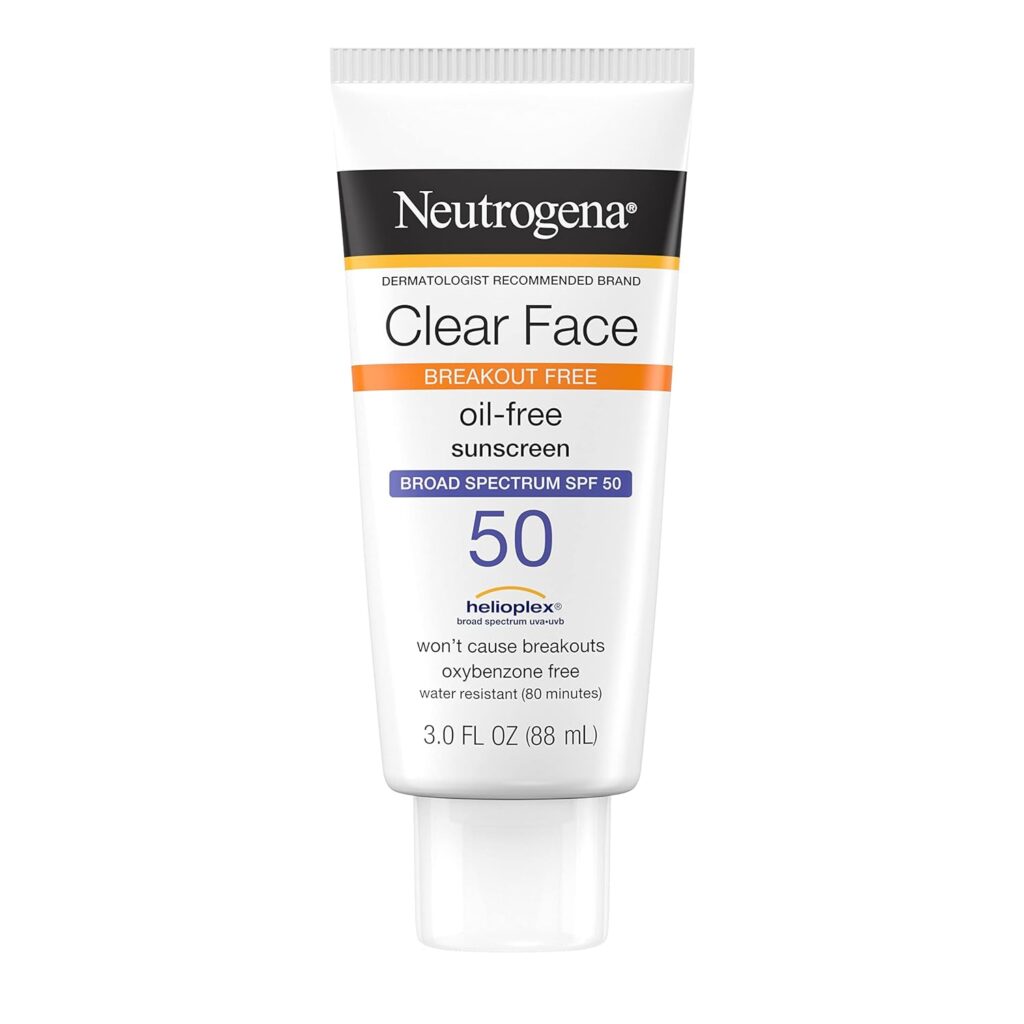
How To Choose The Right Sunscreen For Your Skin Type
Selecting the perfect sunscreen isn’t a one-size-fits-all. Just as our skin types differ, so do our sunscreen needs. Here’s how to navigate the sunscreen aisle, ensuring your choice aligns seamlessly with your skin type and preferences.
1. For Oily Skin
Opt for oil-free, non-comedogenic formulas labeled as “matte” or “gel.” These sunscreens absorb quickly, leaving behind a lightweight finish without clogging pores. Look for words like “oil-free” and “water-based” to keep your skin protected without adding unnecessary shine.
2. Dry Skin
Embrace the hydrating power of sunscreens labeled as “moisturizing” or “hydrating.” Seek formulations that include ingredients like hyaluronic acid, glycerin, or shea butter to lock in moisture.
Creamier consistencies provide an additional layer of hydration, ensuring your skin stays nourished under the sun’s rays.
3. Sensitive Skin
Gentle is the key for sensitive skin. Look for sunscreens labeled as “hypoallergenic” and “fragrance-free.” Mineral-based sunscreens with zinc oxide or titanium dioxide are often well-tolerated by sensitive skin. Conduct a patch test before full application to ensure compatibility.
4. Acne-Prone Skin
Seek oil-free and non-comedogenic sunscreens to avoid aggravating acne. Opt for formulations that tout “non-acnegenic” properties. Sunscreens with added niacinamide can be beneficial for those prone to breakouts, helping to soothe and control excess oil.
5. Combination Skin
Combination skin requires a balanced approach. Choose a sunscreen that caters to both oily and dry areas. Lightweight, gel-based sunscreens work well for oilier zones, while slightly richer formulations can nourish drier areas without overwhelming oil-prone regions.
6. Mature Skin
Emphasize sunscreens that boast anti-aging properties. Look for terms like “broad-spectrum,” “antioxidant-rich,” and “anti-aging.” Sunscreens with added vitamins C and E can contribute to maintaining skin elasticity and combating free radical damage.
7. For Darker Skin Tones
Avoid white cast by selecting sunscreens specifically formulated for darker skin tones. Gel-based or sheer formulations are often less likely to leave a residue. Consider tinted sunscreens for a seamless blend with your skin tone.
8. For Sports or Outdoor Activities
If you’re engaging in sports or outdoor activities, opt for water-resistant and sweat-resistant formulations. Look for “sport” or “active” on the label, indicating enhanced durability during physical activities.
Remember to apply sunscreen generously, reapply as directed, and test a small area before widespread use, especially for those with sensitive skin. With this tailored approach, finding the perfect sunscreen becomes a personalized ritual, ensuring your skin not only stays protected but also feels nourished and comfortable under the sun’s warm embrace.
How To Prevent Tanning (Can Sunscreen Prevent Tanning)
Embracing safety habits when under the sun is not just a routine, it’s a move to safeguard the health of your skin while enjoying the warmth of the sun. Here’s how to cultivate habits that will not only shield you from the sun’s rays but also contribute to a lifetime of radiant and protected skin.
1. Seek Shade Wisely: When the sun is at its zenith, from 10 a.m. to 4 p.m., seek refuge in the shade. Not only does it provide a cooling sanctuary, but it also shields you from the sun’s most intense rays. Consider this your golden hour for shade-seeking tranquility.
2. Cloak Yourself in Protective Layers: Sun-kissed doesn’t mean sun-drenched. Wear protective clothing, such as long sleeves, wide-brimmed hats, and sunglasses with UV protection. These not only elevate your style but form a formidable barrier against UV rays, minimizing direct exposure to your skin.
3. Use Sunscreen: Make sunscreen a non-negotiable part of your daily routine. Opt for a broad-spectrum sunscreen with at least SPF 30, and apply it generously to all exposed skin. Reapply every two hours, or more frequently if swimming, sweating, or toweling off.
4. Timing Matters: Plan outdoor activities strategically. If possible, schedule them in the early morning or late afternoon when the sun’s intensity is gentler. This not only enhances your sun safety but also presents a more enjoyable outdoor experience.
5. Hydration: A Sunlit Necessity: Stay hydrated to complement your external sun protection. Adequate water intake not only maintains your overall health but also contributes to your skin’s resilience in the face of sun exposure.
6. Mind Your Environment: Be conscious of reflective surfaces like water, which can intensify UV radiation. Adjust your sun safety habits accordingly, taking extra precautions in such an environment to mitigate increased sun exposure.
7. Regular Skin Checks: Familiarize yourself with your skin, and carry out regular skin checks. Keep an eye out for changes in moles, freckles, or any unusual spots. Early detection is key in addressing potential skin issues.
Don’t forget that sun safety isn’t just a seasonal practice—it’s a year-round commitment to your skin’s well-being. Adopting these habits will not only help you embrace a sun-smart lifestyle but also lay the foundation for skin that radiates health and vitality throughout the seasons.
Can You Tan With Sunscreen SPF 50 (Can Sunscreen Prevent Tanning)
Yes, you can tan with sunscreen SPF 50 since no SPF can 100% protect you from tanning. Sunscreen with SPF 50 provides a high level of protection against the sun’s ultraviolet (UV) rays, particularly UVB rays responsible for sunburn and tanning.
While SPF 50 does not completely block UV rays, it significantly reduces the amount of UVB radiation reaching your skin. Therefore, using SPF 50 sunscreen can help prevent sunburn and minimize the likelihood of tanning.
However, it’s important to note that no sunscreen offers 100% protection. Tanning can still occur, especially with prolonged or intense sun exposure. Factors such as skin type, the intensity of sunlight, and the duration of sun exposure all play a role in determining the effectiveness of sunscreen.
To maximize protection and minimize the risk of tanning:
- Apply Generously: Use an adequate amount of sunscreen and reapply it every two hours, or more frequently if you’re swimming, sweating, or toweling off.
- Choose Broad-Spectrum: Ensure your sunscreen is labeled as “broad-spectrum,” meaning it protects against both UVA and UVB rays.
- Limit Sun Exposure: Seek shade during peak sun hours (10 a.m. to 4 p.m.) and take breaks from direct sunlight, especially if you’re in a location with intense sun.
- Wear Protective Clothing: Cover up with long sleeves, pants, and a wide-brimmed hat to provide additional physical protection against the sun.
- Use Additional Sun Protection Measures: Consider sunglasses for eye protection and avoid tanning beds, as they emit UV radiation that can lead to skin damage.
Does Sunscreen Prevent Tanning On Face? (Can Sunscreen Prevent Tanning)
No. The notion that sunscreens entirely prevent tanning is indeed a common misconception.
While sunscreens are effective in protecting the skin from harmful UV rays and reducing the risk of sunburn and skin cancer, they may not completely inhibit the skin’s natural response to sun exposure, which includes tanning.
Sunscreens mainly shield against the immediate and visible effects of UV radiation, but the skin may still undergo slight pigmentation changes.
To prevent tanning, you can consider additional measures such as seeking shade during peak sun hours, wearing protective clothing, and using accessories like hats and sunglasses.
It’s crucial to understand that the presence of a tan doesn’t necessarily indicate inadequate sunscreen use; rather, it reflects the skin’s defense mechanism in response to UV exposure.
The emphasis should be on maintaining a balance between enjoying outdoor activities and adopting comprehensive sun protection strategies to safeguard skin health.
Can You Tan With Sunscreen SPF 30 (Can Sunscreen Prevent Tanning)
Yes, you can still tan with sunscreen SPF 30, but the tan may be less intense compared to not using sunscreen at all.
While SPF 30 provides significant protection against harmful UVB rays, it does not completely block them. Tanning is the skin’s natural response to UV exposure, especially UVA rays, which can still penetrate the skin even with sunscreen.
SPF 30 allows some UV rays to reach the skin, leading to a reduced risk of sunburn and a milder tan compared to lower SPF levels or no sunscreen at all.
To minimize tanning, it’s crucial to apply sunscreen generously, reapply regularly, and complement it with other sun protection measures like seeking shade and wearing protective clothing.
Does Sunscreen Prevent Sunburn (Can Sunscreen Prevent Tanning)Top of Form
Yes, sunscreen is designed to prevent sunburn by providing a protective barrier against the harmful effects of ultraviolet (UV) radiation from the sun.
Sunburn is primarily caused by exposure to UVB rays, and the sunscreen works by absorbing, reflecting, or scattering these rays to reduce their impact on the skin.
Sunscreen typically has a Sun Protection Factor (SPF) rating, which indicates the level of protection it offers against UVB rays.
The higher the SPF, the greater the protection. When applied correctly, sunscreen forms a shield that helps prevent the skin from absorbing excessive UVB radiation, thus reducing the risk of sunburn.
To effectively prevent sunburn, it’s essential to apply sunscreen generously to all exposed skin, including often overlooked areas, and to reapply it at regular intervals, especially after swimming, sweating, or towel drying.
Additionally, combining sunscreen use with other sun protection measures, such as seeking shade, wearing protective clothing, and avoiding peak sun hours, enhances overall sunburn prevention strategies.
Does Sunscreen Prevent You From Getting Darker? (Can Sunscreen Prevent Tanning)
Sunscreen is effective in reducing the likelihood of getting darker due to sun exposure. The primary purpose of sunscreen is to protect the skin from the harmful effects of ultraviolet (UV) radiation, which includes both UVA and UVB rays.
UVB rays are primarily responsible for causing sunburn and contributing to skin darkening or tanning.
By applying sunscreen, you create a protective barrier that absorbs or reflects UV rays, preventing them from penetrating the skin as deeply. Sunscreen with a higher Sun Protection Factor (SPF) provides more significant protection, reducing the risk of sunburn and limiting the extent of skin darkening.
However, it’s important to note that sunscreen doesn’t completely block all UV rays, especially UVA rays, which can still contribute to skin darkening.
Additionally, individual factors such as skin type, the intensity and duration of sun exposure, and genetic predisposition play a role in how the skin responds to sunlight.
Can Sunscreen Expire? (Can Sunscreen Prevent Tanning)
Yes, sunscreen can expire. Sunscreen typically has an expiration date, which is an indication of the period during which the product is considered effective and stable. The active ingredients in sunscreen, such as UV filters, can degrade over time, leading to a reduction in their effectiveness.
Exposure to air, light, and temperature fluctuations can also contribute to the degradation of sunscreen components. Using expired sunscreen may compromise its ability to provide adequate protection against harmful ultraviolet (UV) rays.
Who Should Wear Sunscreen (Can Sunscreen Prevent Tanning)
Everyone, regardless of age, skin type, or skin color, should wear sunscreen. sunscreen is a universally important skincare product for individuals of all ages, skin tones, and backgrounds.
It plays a crucial role in preventing sunburn, protecting against premature aging, and reducing the risk of skin cancer. Incorporating sunscreen into daily skincare routines is a proactive step toward maintaining healthy and resilient skin.
The Bottom Line On Can Sunscreen Prevent Tanning
So, can sunscreen prevent tanning? The answer is simply no. While sunscreen serves as a formidable shield against the harmful effects of UV rays, it does not provide 100% cover.
Sunscreen, with its SPF prowess, undoubtedly mitigates the risk of sunburn and helps in minimizing the intensity of a tan. The key lies in embracing a holistic approach to sun safety, combining sunscreen application with other protective measures like seeking shade and donning appropriate clothing.






